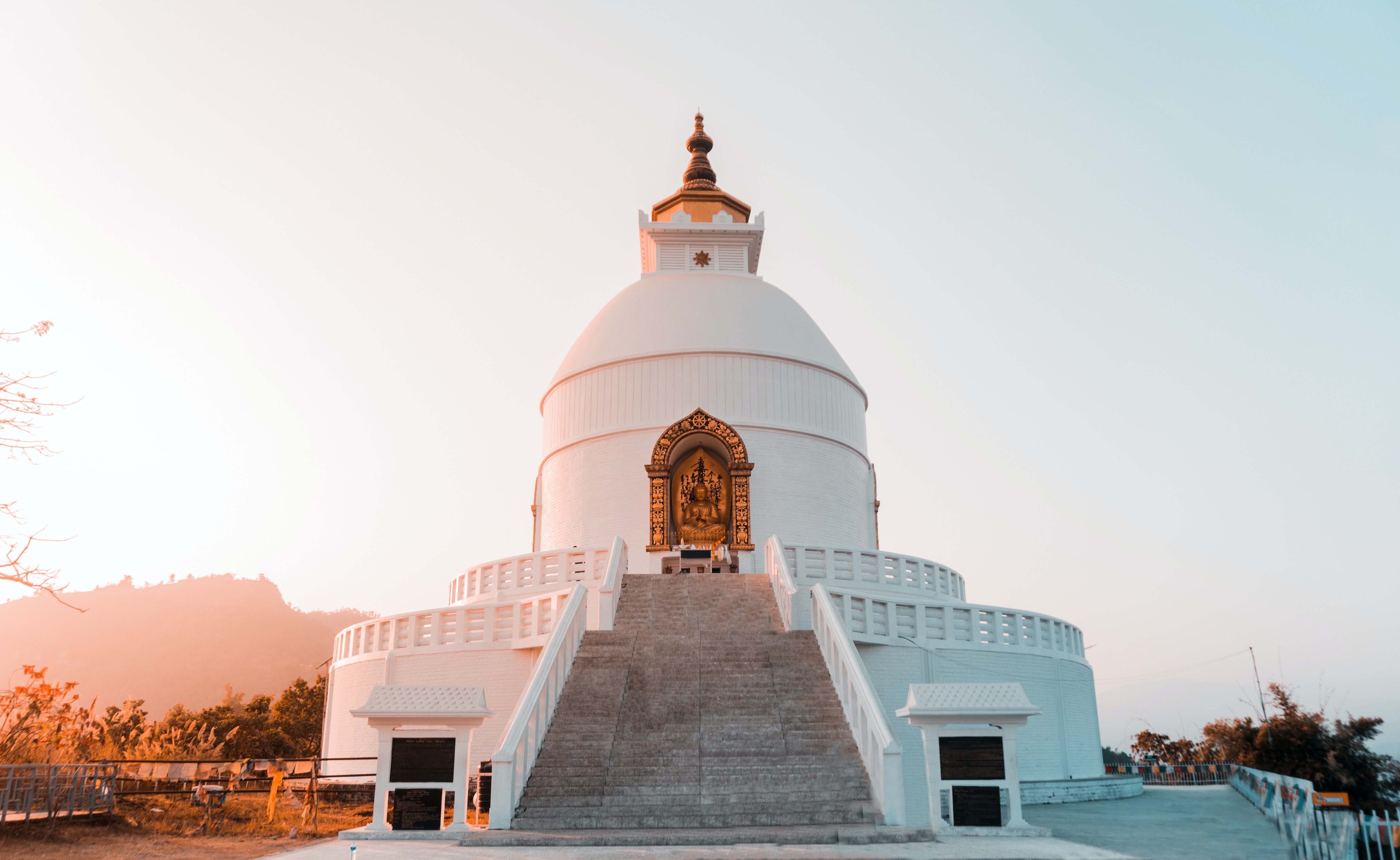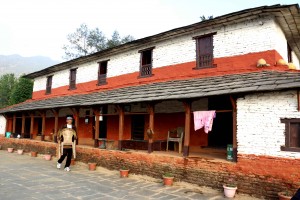“Let’s go up here,” my companion suggested, crossing the road and climbing up a small trail.
“I want to show you something.”
My companion had, it turned out, taken me on a trail that went as much up as back into the past.
We were soon on a narrow stone-paved street. Huge Newar-style houses, bigger than any I’d seen in Kathmandu, stood on either side of the path. We had arrived in a town several decades after it had blossomed, boomed, and then declined.
The town was Dana in Myagdi district of west Nepal. It lay on the ancient salt/rice trade route that passed through the Kali Gandaki valley. The trade route once connected Nepal’s mid-hills to Thak Khola. From there it went further north to Lo Manthang and eventually into Tibet. More recently, it had become a spot on the Annapurna trek map.
Dana was a town redolent of the prosperity Thak Khola once enjoyed. Everything reflected opulence: palatial houses with large courtyards, lavish use of wood, ornately carved windows, slate roofs and orange orchards.
But time and the fluctuating fortunes had done their work too. The courtyards were now overgrown with grass, the suntala trees looked old and untended, the colors of the walls had faded, doors were missing and windows were broken in places. It was as if people and prosperity had abandoned it overnight.
A few people still lived in Dana, although passing through I only noticed women. Some of them were washing clothes in the courtyards. Others, older women, were basking in the sun. Their presence only made the place look more forlorn: the houses looked bigger with only a few people in their courtyards.
It was hard not to wonder, and easy to visualise, what Dana would have been like in its heydays. The towns of Thak Khola, especially those that acted as trading posts, at their height were impressive sights. Giuseppe Tucci, the eminent Tibetologist who traveled in Thak Khola, Dolpo and Jumla in the 1950s, called the houses of the local merchants “palaces.”
In 1962, traveling around Thak Khola, the ethnologist Christoph von Fürer-Haimendorf was similarly awestruck by the beauty of the houses of the Thakali merchants.
He described them in his 1975 book Himalayan Traders, writing that they were “of a size, architectural standard and quality of interior decoration most uncommon in the hills of Nepal and surpassed only by the houses of some of the rich Sherpa traders of Solu.”
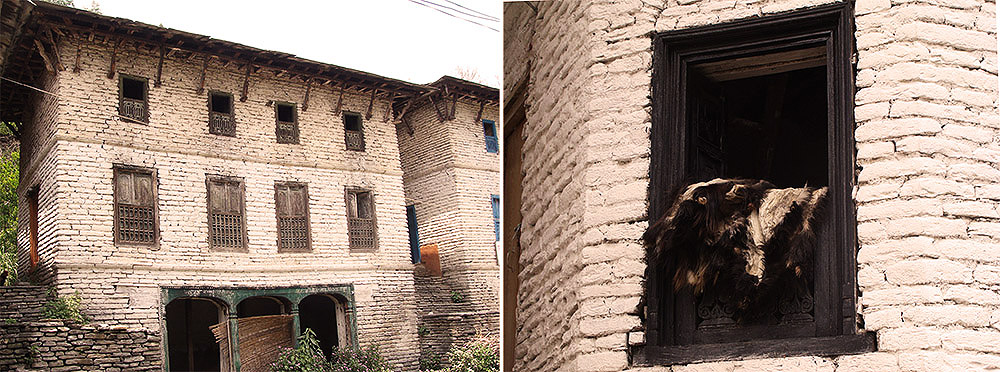
Dana was now a fossil of a town, with only an imprint of its glory days remaining. Bottles of pickles were arrayed on window sills. From one window several yak skins were hanging. Millet stalks were drying in a courtyard, the same courtyard, perhaps, where grain and salt were once piled, exchanged, and loaded onto pack animals.
Recalling that salt used to be bartered for grain here, Dana, the Nepali word for grain, struck me as an appropriate name. However, the town’s name is not thusly derived. Tukche, another big center for bartering, reflects its mercantile function more obviously. ‘Tuk’ means ‘grain’ and ‘che’ means ‘flat place’ in Tibetan.
***
In its heydays, the courtyards in Dana would have been filled with mounds of grain and salt, Tibetans and Nepali traders haggling over exchange rates, bags of rice from Nepal’s grain basket in the south loaded on pack animals to be carried north, and rock salt from western Tibet being loaded on the backs of porters returning south.
And presiding over this scene of ancient transaction would have been a beaming subba (salt commissioner), calculating his imminent profits. To see all this, we would have needed to arrive in Dana, at the latest, in 1927, the year the salt-trade monopoly (nun theka) was officially abolished.
From then on, the salt trade reverted to the days of free trade, with several traders involved in the bartering of Tibetan salt. Although trade continued freely until the takeover of Tibet by China, individual traders could not deal in quantities as large as the subbas had done.
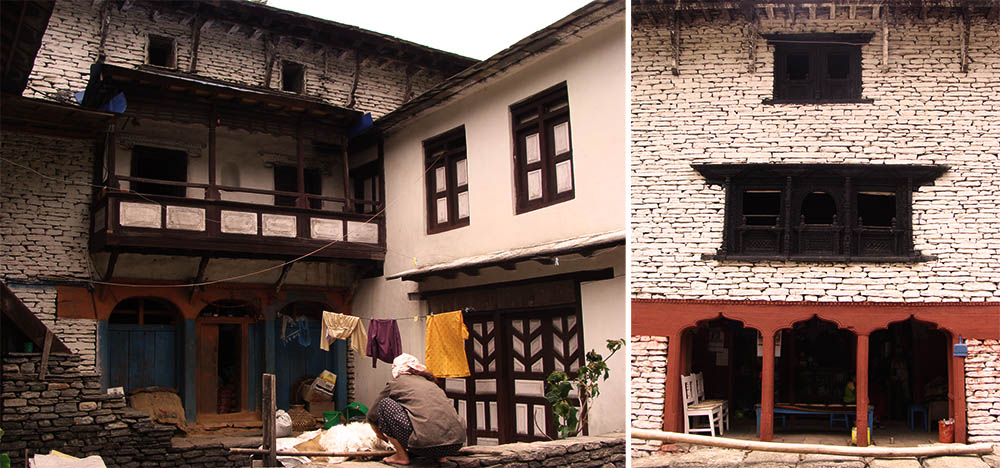
Dana’s history as a center of power and wealth was a long one. According to some documents, the customs office was established in Dana in the 1850s. Some scholars think it could have been in operation since the eighteenth century. One document mentions the collection of customs duties at Dana by a contractor, known as ijaridar, in 1853. Records show that the ijaridar (the system was known as ijari) was paying an annual royalty of Rs 29,001 to the government. Dana was probably selected as the location for the customs office owing to it warmer winters compared to the harsh cold months of Tukche.
The anthropologist Michael Vinding traces the history of Dana’s customs office to the days when Thak Khola was under the sway of the kingdom of Parbat. “In order to collect customs duties from the traders along the Kali Gandaki River, the kings of Parbat are said to have established a customs office (Bhansar) at Dana, an hour’s walk south of Thak Khola. In 1786 Parbat fell to the Shah kings of Gorkha, and the collection of customs duties at Dana thus came under the administration of the newly founded Nepali State.” One historical document from the 11th century refers to the king of Parbat as the “Grain King.” This title reflects the annual tribute paid to the Parbat kings, who controlled parts of Thak Khola.
In 1862, Prime Minister Jang Bahadur Rana (1846-79) changed the old revenue system, introducing a system of monopoly over the salt trade in Thak Khola. Under the system, the collection of customs duty and the salt-trade monopoly were granted by the government to the highest bidder. The winner of such an auction, held every three years, was given the title of subba.
The palatial houses of Dana belonged to the subbas who had the wealth, and thus the pomposity, to build big. They were influenced by the rich Newar merchants they encountered in trading hubs such as Kathmandu, Pokhara, Butwal and Bhairawa. As my trekking companion, an anthropologist well-versed in the history of Thak Khola, explained, “The Thakali subbas wanted to look like, act like, and be recognised and seen as part of the Nepal ruling class and entrepreneurial elite.”
‘Hollow’ was the word that came to mind walking down the main street of Dana eighty-five years after the salt monopoly was abolished. The exteriors of the houses were in a reasonably good condition, giving them the appearance of having lost only their souls and vitality. They stood lifeless and silent, yet were imposing, like the skeleton of a huge animal.
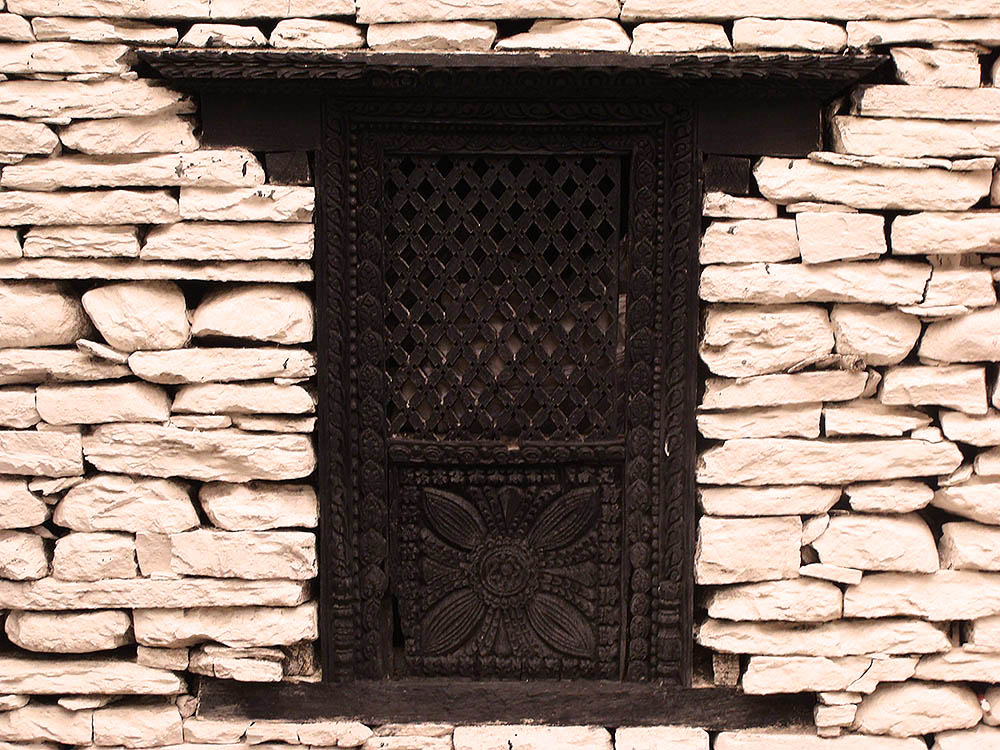
A trade route once made Dana what it was.
Their modern-day avatars, the road that now goes up Thak Khola, has contrived to keep Dana a ghost town. In a cruel twist of fate, Dana is now at the receiving end of the accidental monopoly in tourism that certain towns and villages in Thak Khola enjoy. It does not make sense to a trekker or someone traveling in a vehicle to stop at Dana; it is simply a place to pass through, not to stay.
If Dana had become a regular stop on trek itineraries, there is little doubt some of the magnificent houses would have been renovated and turned into lodges and hotels.
But who knows? One of these days, some descendant of the last subba might decide to turn one into a hotel and, just for nostalgia’s sake, organise a daily reenactment of the golden days by having a mule train (loaded with Snickers?) trundle down Dana’s street. ■
(Excerpts used here are from Christoph von Fürer-Haimendorf’s “Himalayan Traders: Life in Highland Nepal,” John Murray, London, 1975 and Michael Vinding’s paper “A History of the Thak Khola Valley, Nepal,” published in “Kailash: Journal of Himalayan Studies; Vol. 14, No. 3 & 4,” 1988. The writer thanks Don Messerschmidt for taking him off the main trail and through Dana, and for steering the article on a more accurate course by fact-checking several dates and names.)






